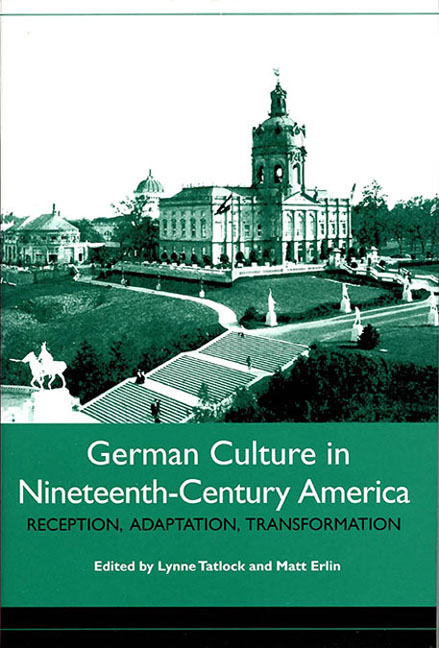Book contents
- Frontmatter
- Contents
- List of Illustrations
- Acknowledgments
- Introduction
- 1 Cultural Politics at the Turn of the Twentieth Century
- 2 In Pursuit of Intellectual Culture
- 3 Translation American Style
- Domesticated Romance and Capitalist Enterprise: Annis Lee Wister's Americanization of German Fiction
- Pictures of Travel: Heine in America
- Retroactive Dissimilation: Louis Untermeyer, the “American Heine”
- A Tramp Abroad and at Home: European and American Racism in Mark Twain
- 4 Immigration and Naturalization Acts
- Contributors
- Index
Retroactive Dissimilation: Louis Untermeyer, the “American Heine”
from 3 - Translation American Style
Published online by Cambridge University Press: 13 April 2017
- Frontmatter
- Contents
- List of Illustrations
- Acknowledgments
- Introduction
- 1 Cultural Politics at the Turn of the Twentieth Century
- 2 In Pursuit of Intellectual Culture
- 3 Translation American Style
- Domesticated Romance and Capitalist Enterprise: Annis Lee Wister's Americanization of German Fiction
- Pictures of Travel: Heine in America
- Retroactive Dissimilation: Louis Untermeyer, the “American Heine”
- A Tramp Abroad and at Home: European and American Racism in Mark Twain
- 4 Immigration and Naturalization Acts
- Contributors
- Index
Summary
Louis Untermeyer's paired publication of translations of about three-quarters of Heinrich Heine's poems and a full biography (P, L) in 1937 marks a near boundary of a history of American reception that reaches well back into the nineteenth century. Indications are that the reception was extensive, although sometimes more broad than deep. Numerous German-language publications culminated in the seven-volume edition, pirated in Philadelphia beginning in 1855, which, because Heine and his publisher had not been able to come to an agreement, was the first reasonably accurate and complete collected edition to appear. It went into five printings by 1860 and by 1864 it had sold eighteen thousand sets in the United States, more than any work of Heine's in Germany during his lifetime, except probably the Buch der Lieder (Book of Songs, 1827), indicating what his success in Germany might have been if it had not been for the censorship. A number of American writers became interested in him, among them Mark Twain and Whitman, and more cautiously, Longfellow and Lowell. But the champion admirer was William Dean Howells, who learned German to read Heine and felt liberated by him.
He ranked eighth in frequency among German poets translated from 1830 to 1864, and third, behind Goethe and Uhland, from 1865 to 1899. The numerous translators were probably not responding to a need to read Heine in English, as German was becoming the primary foreign language in American educational and cultural life, but more likely to challenges to poetic ingenuity. Even in 1937, after the First World War had destroyed the status of German in American schools and colleges, Unter-meyer could still suggest “that, having ascertained the meaning, the reader take up the German and read the original for the virgin beauty, the intrinsic color and cadence of the melodic line” (P, xxxi), the assumption being that the educated American reader will know some German. It is likely for this reason that the Englishing of Heine's prose proceeded more slowly. It culminated in Charles Godfrey Leland's edition that eventually came to twenty volumes. Leland was a remarkable, multifaceted writer and amateur researcher, but when he undertook the edition he was sixty-five years old and had become careless and cranky.
- Type
- Chapter
- Information
- German Culture in Nineteenth-Century AmericaReception, Adaptation, Transformation, pp. 211 - 232Publisher: Boydell & BrewerPrint publication year: 2005

